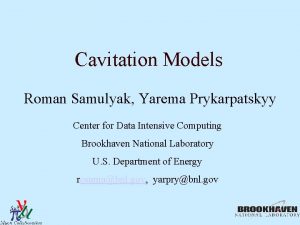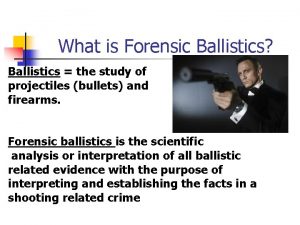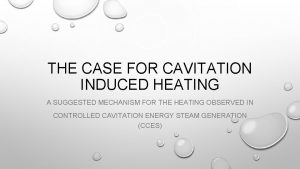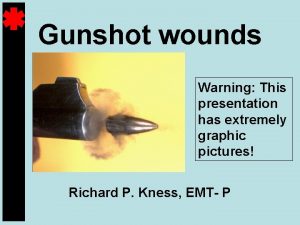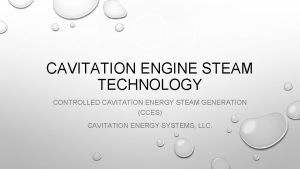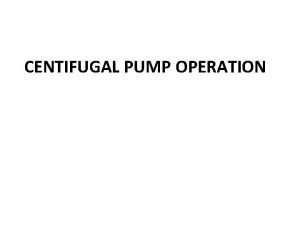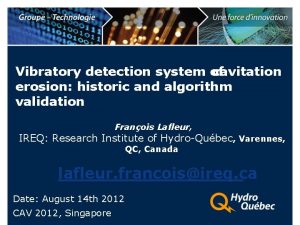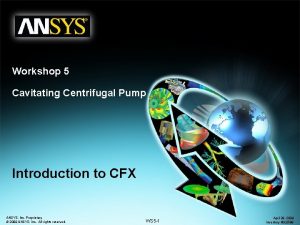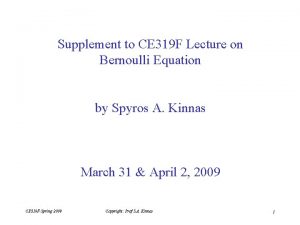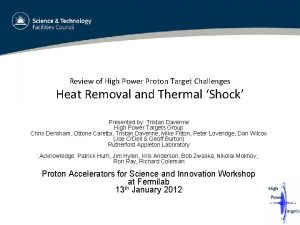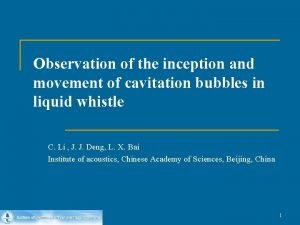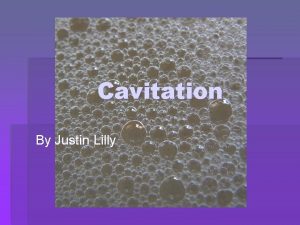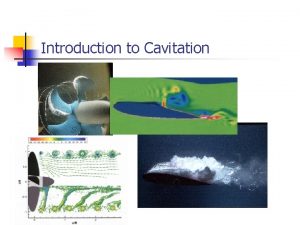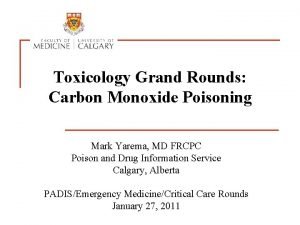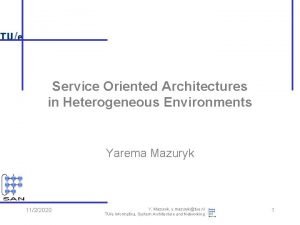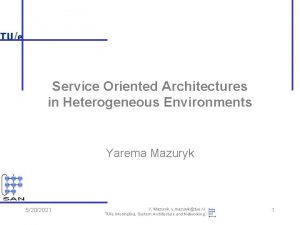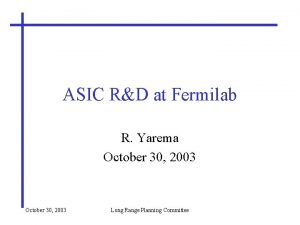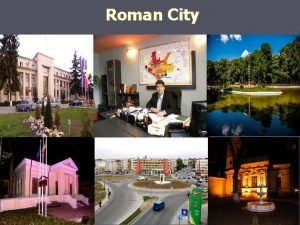Cavitation Models Roman Samulyak Yarema Prykarpatskyy Center for















- Slides: 15

Cavitation Models Roman Samulyak, Yarema Prykarpatskyy Center for Data Intensive Computing Brookhaven National Laboratory U. S. Department of Energy rosamu@bnl. gov, yarpry@bnl. gov

Talk outline • Modeling of the equation of state for two-phase fluid systems • Numerical simulation of the interaction of mercury with a proton pulse in a thimble (BNL AGS and CERN ISOLDE experiments) • Conclusions • Future research

The system of equations of compressible hydrodynamics • The system is solved using the front tracking technique for free surfaces

Isentropic two phase EOS model for cavitating liquid • Approach: connect thermodynamically consistently different models for different phases • Pure liquid is described by the stiffened polytropic EOS model (SPEOS) • Pure vapor is described by the polytropic EOS model (PEOS) • An analytic model is used for the mixed phase • SPEOS and PEOS reduced to an isentrope and connected by the model for liquid-vapor mixture • All thermodynamic functions depend only on density

The EOS • does not take into account drag forces, viscous and surface tension forces • does not have full thermodynamics Current work on improved models will be discussed in section Future Research

Simulation of the Mercury Splash Schematic of the experiment

Mercury splash (thimble): experimental data Mercury splash at t = 0. 88, 1. 25 and 7 ms after proton impact of 3. 7 e 12 protons

Mercury splash (thimble): numerical simulation

Mercury splash (thimble): numerical simulation

Increasing the spot size of the proton beam results in a decrease of the splash velocities

The splash velocity of mercury depends linearly on the proton intensity Numerical simulations Approximation from experimental data

Conclusions • Numerical simulations show a very good agreement with experimental data at early time. • The lack of full thermodynamics in the EOS leads to some disagreements with experiments for the time evolution of the velocity. Can be corrected by the energy deposition. Experimental data on the evolution of the explosion velocity (from Adrian Fabich’s thesis) • Equation of states needs additional physics (better mechanism of mass transfer, surface tension, viscosity etc. )

Future Research • Further work on the EOS modeling for cavitating and bubbly flows. a) Direct method: study a liquid-vapor gas mixture as a system of one phase domains separated by free surfaces using Fron. Tier’s code interface tracking capability a) b) c) Direct numerical simulation of the pressure wave propagation in a bubbly liquid: a) initial density; red: mercury, blue: gas bubbles, b) initial pressure; the pressure is 500 bar at the top and 1 bar at the bottom, c) pressure distribution at time 100 microseconds; pressure is 6 bar at the bottom. Future problem: develop a nonlocal Riemann solver for the propagation of free interfaces which takes into account the mass transfer due to phase transitions

b) Homogeneous method: use a continuous description of the liquidvapor gas mixture by means of homogeneous equation of state models and the Rayleigh-Plesset equation for the average gas bubble size evolution Future problem: include terms describing the mass transfer due to phase transitions

• Further studies of the muon collider target issues. Studies of the cavitation phenomena in a magnetic field. • Studies of hydrodynamic aspects of the cavitation induced erosion in the SNS target.
 Roman samulyak
Roman samulyak Bullet cavitation
Bullet cavitation Cavitation water heater
Cavitation water heater Dcapbtls
Dcapbtls Bullet cavitation
Bullet cavitation Cavitation energy systems
Cavitation energy systems What is cavitation in centrifugal pump
What is cavitation in centrifugal pump Cavitation detection system
Cavitation detection system Cavitation bullet wounds
Cavitation bullet wounds Ansys cavitation
Ansys cavitation Cavitation tunnel
Cavitation tunnel Numi cavitation reviews
Numi cavitation reviews Cavitation
Cavitation Hifu
Hifu What is the difference between model and semi modal
What is the difference between model and semi modal Politheistic
Politheistic
